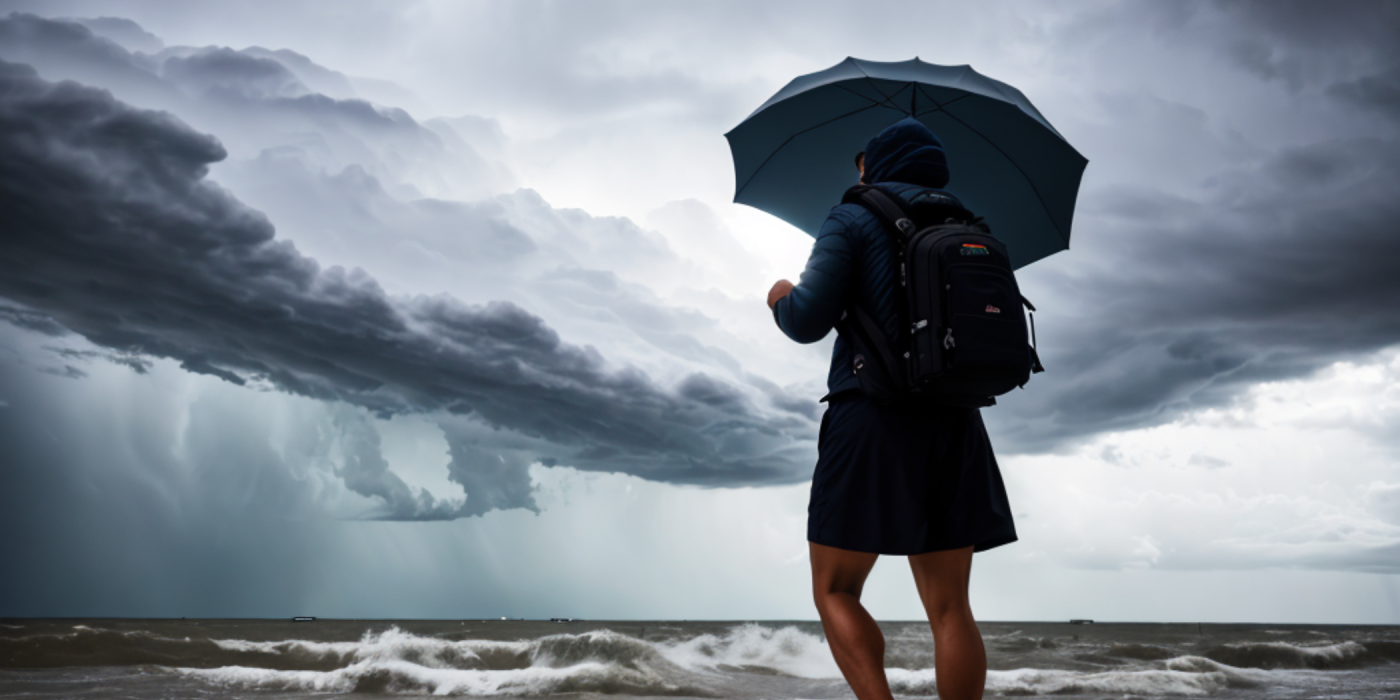The Future of Weather Forecasting: A Revolution Driven by Technology

Weather forecasting has a critical role in every facet of our lives, informing decisions from what to wear, to when to harvest crops, and even how to respond to the threat of severe weather events. As we stand on the precipice of a new era of weather prediction, it's important to reflect on the progress made to date and the opportunities that lie ahead.
The Importance of Weather Forecasting
Weather forecasting isn't just about deciding whether to take an umbrella when leaving the house. At a larger scale, it's essential for agriculture, aviation, shipping, and outdoor events. Even energy companies, particularly those in renewable sectors like wind and solar, depend heavily on accurate forecasts.
From Past to Present: The Evolution of Weather Forecasting
The art of weather forecasting has evolved considerably over the years. What began as simple observations of the sky has turned into a sophisticated science. In the 19th century, basic instruments like thermometers and barometers were used. Then, weather stations became interconnected, leading to the first weather maps. By the 20th century, meteorologists began using radar, computers, and satellites, vastly improving the accuracy of their predictions.
Yet, as sophisticated as modern weather forecasting has become, there's still room for improvement. Weather systems are inherently chaotic, and even the most advanced models can struggle with precise predictions more than a week in advance.
The Need for Advancements in Weather Prediction
Weather predictions play a crucial role in our ability to respond effectively to climate change. Improved forecasting accuracy could mean earlier warnings for severe weather events, better preparation for droughts and floods, and more effective responses to long-term climate changes. With new technologies emerging at a rapid pace, the future of weather prediction is brimming with possibilities, each promising to push the boundaries of what we currently comprehend.
Current State of Weather Forecasting
The realm of weather forecasting is replete with an array of techniques and technologies that have continued to evolve over the years.
Satellite Technology
Utilising satellite technology has been pivotal in weather prediction. Satellites orbiting the Earth provide meteorologists with an unobstructed view of the atmosphere, aiding them to monitor atmospheric conditions, track weather patterns, and identify signs of severe weather. Through geostationary and polar-orbiting satellites, we are privy to continuous data about the Earth's weather, climate, and environment.
Weather Radar Systems
Weather radar systems are another cornerstone of modern meteorology. These systems send out radio waves that reflect off precipitation, allowing meteorologists to monitor rainfall intensity, wind speed, and direction. Advanced Doppler radar technology can even detect airborne particles and assist in the prediction of hazardous weather conditions such as tornadoes.
Weather Balloons
Deployed twice daily across hundreds of locations worldwide, weather balloons or radiosondes provide a wealth of in-situ measurements. They deliver vital data on temperature, humidity, pressure, and wind at various altitudes, offering a vertical profile of the atmosphere.
Numerical Weather Prediction (NWP)
Numerical Weather Prediction (NWP) models utilise mathematical equations to simulate the atmosphere's behaviour. Data collected from satellites, radar, and weather balloons are plugged into these models, which then generate predictions for future weather conditions.
Challenges and Limitations
However, these current forecasting models are not without limitations. The accuracy of predictions often diminishes with the length of the forecast period, largely due to the inherent chaos in weather systems. Additionally, our forecasts can be limited by sparse data in remote regions, computational constraints, and the ever-changing nature of the atmosphere. Whilst the technology and methods are consistently evolving, these challenges underscore the continuous need for advancements in weather forecasting.
The Intersection of Technology and Weather Forecasting
In recent years, technology has been at the forefront of meteorological advancements, leading to a revolution in the realm of weather forecasting. Cutting-edge developments in artificial intelligence (AI), machine learning (ML), and the Internet of Things (IoT) are playing pivotal roles in shaping the future of meteorology.
AI and Machine Learning in Weather Prediction
AI and ML are transforming how meteorologists interpret and analyse vast amounts of meteorological data.
Deep Learning for Pattern Recognition
Deep learning, a subset of ML, utilises complex algorithms to recognise patterns within the data. With the ability to learn from multi-dimensional data sets, it aids in identifying atmospheric patterns that lead to specific weather conditions. This pattern recognition can provide meteorologists with a clearer understanding of how and why certain weather phenomena occur.
Machine Learning for Data Analysis and Prediction
ML algorithms are increasingly used to analyse complex weather data and make precise predictions. By recognising patterns and learning from past data, these tools provide greater accuracy and speed in forecasting, from predicting storm paths to estimating rainfall amounts.
Internet of Things (IoT) and Weather Forecasting
The integration of IoT in meteorology is a significant stride forward.
The Potential of Interconnected Weather Sensors
The IoT consists of interconnected devices or sensors, collecting data from their environment. When applied to meteorology, an extensive network of weather sensors can provide real-time, granular data on weather conditions.
Impact on Hyperlocal Weather Forecasting
This wealth of data enables hyperlocal weather forecasting, offering accurate predictions at an extremely localised level. It's not merely about predicting whether it will rain in London, but whether it will rain on your street in London, providing significant benefits for industries like agriculture, event planning, and more.
Big Data and Climate Modelling
Introduction to the Concept of Big Data in Weather Forecasting
The advent of big data technology has brought about significant changes across numerous industries, and meteorology is no exception. Big data, a term used to describe extremely large data sets that can be analysed computationally to reveal patterns and trends, is making waves in the world of weather forecasting. It provides a means to manage and analyse the wealth of information available from satellite imagery, radar systems, ground stations, and other meteorological sources.
Role of Supercomputers in Climate Modelling and Long-Term Forecasting
The Power of Supercomputers in Weather Forecasting
Supercomputers, with their unprecedented processing power, play a crucial role in the utilisation of big data in meteorology. These computational behemoths allow meteorologists to process vast amounts of data quickly, facilitating more accurate and efficient weather forecasts. In addition, supercomputers enable sophisticated climate modelling that is essential for long-term forecasting. This becomes increasingly important as we strive to understand and mitigate the impacts of climate change.
The Potential of Climate Modelling
Advanced climate modelling, powered by supercomputers, allows for more precise predictions about future climate patterns. This technology can simulate years of weather patterns within days, and this depth of data can lead to highly accurate forecasts that inform us about long-term climatic changes.
Detailed Examples of Successful Utilisation of Big Data in Meteorology
One prime example of successful utilisation of big data in meteorology is the Met Office, UK’s national weather service. They have employed supercomputers to process data from numerous sources, resulting in more accurate and localised weather forecasts. Another example is IBM’s GRAF (Global High-Resolution Atmospheric Forecasting) model that analyses data from millions of sources to create high-resolution, hour-by-hour weather forecasts. These examples highlight the potential for improved weather prediction through big data analysis.
The Future of Weather Forecasting
Impact of Quantum Computing on Weather Forecasting
Quantum computing, characterised by its potential for immense processing power, is set to revolutionise weather forecasting. Unlike classical computers, quantum computers can handle large, complex systems, making them ideal for simulating atmospheric conditions. This could pave the way for more accurate and longer-term forecasts, providing a more in-depth understanding of weather patterns and climate change.
Potential of Drone Technology for Data Collection
Drones, or unmanned aerial vehicles (UAVs), present a unique opportunity for meteorological data collection. They can reach remote or hazardous locations, gathering crucial information about atmospheric conditions that would otherwise be inaccessible. By contributing to the richness and granularity of data, drones could significantly enhance the precision of weather predictions.
Promising Technologies and Innovations
Nanotechnology in Weather Sensing
Nanotechnology, with its capabilities for miniaturisation and enhanced sensitivity, is expected to make significant strides in weather sensing. Sensors developed using nanotechnology could detect minute changes in atmospheric conditions, offering a more nuanced insight into weather dynamics.
Geoengineering and Weather Prediction
Geoengineering, the deliberate and large-scale intervention in the Earth's climate system, could potentially influence weather predictions. While it's a contentious field due to ethical and safety concerns, it offers another dimension to understanding and predicting weather patterns.
The Potential for Improved Accuracy, Speed, and Specificity
With the advancement of these technologies, the future of weather forecasting looks promising. It is anticipated that the combination of quantum computing, drone technology, nanotechnology, and geoengineering could greatly improve the accuracy, speed, and specificity of weather forecasts, bringing about a new era in meteorology.
Challenges and Ethical Considerations
Potential Barriers to Advancements
Although the future of weather forecasting appears to be bright with the advent of innovative technologies such as AI, big data, and IoT, there are still considerable barriers that could impede progress.
One of the primary obstacles is the significant cost of implementing and maintaining these technologies. The development and upkeep of sophisticated systems like quantum computers or expansive networks of interconnected IoT sensors can be prohibitively expensive for many meteorological institutions.
Secondly, the sheer volume of data generated by these technologies poses challenges in terms of storage and analysis. To effectively utilise big data, it's necessary to have both robust data management systems and professionals skilled in data science.
Lastly, despite the potential benefits, these technologies also face pushback due to concerns over privacy and security, particularly in the context of IoT devices.
Ethical Considerations
Furthermore, beyond the practical challenges, there are several ethical considerations that need to be addressed when applying these new technologies to weather forecasting.
As these technologies become increasingly prevalent, issues related to data privacy and ownership are escalating. For instance, with the proliferation of IoT devices collecting environmental data, questions arise about who owns this data, who should have access to it, and how it should be used.
In addition, there's a concern about creating a "digital divide" in weather forecasting. As these advanced technologies are costly, there's a risk that only wealthier nations or organisations can afford to implement them, potentially widening the gap between developed and developing countries in terms of access to accurate weather forecasts.
In summary, while these technologies offer exciting possibilities for the future of weather forecasting, it's crucial to carefully navigate the potential challenges and ethical considerations that they present.
Conclusion
In conclusion, the realm of weather forecasting is not only of paramount importance but is also a rapidly evolving discipline. Technological advancements have undeniably expanded our horizons in this field, significantly improving the accuracy and efficiency of weather predictions.
The Importance of Advancements in Weather Forecasting
Weather forecasting forms the crux of numerous aspects of modern life, from aviation and agriculture to disaster management and daily activities planning. These forecasts, which range from immediate meteorological predictions to long-term climatological models, all hinge on the ever-evolving technological landscape.
The last few decades have witnessed a transformative shift in weather forecasting, ushering in an era of increased precision and timeliness. These advancements have been instrumental in mitigating the impact of severe weather conditions and fostering a proactive approach towards climate change.
Future Outlook
As we gaze into the future, the prospects of further enhancements in weather prediction techniques are both promising and compelling. The cutting-edge combination of machine learning, artificial intelligence, and big data offers unprecedented potential in honing the accuracy and speed of forecasts.
Moreover, innovations such as quantum computing and drone technology are set to redefine the terrain of meteorological predictions. These emerging technologies promise to fine-tune our understanding of weather patterns, delivering hyper-localised forecasts with unparalleled accuracy.
In essence, the future of weather forecasting holds immense promise. As technology continues to evolve and intersect with meteorology, we anticipate a future where forecasts are faster, more accurate, and more specific, ultimately serving to better safeguard our communities and the world at large.
I do hope you have enjoyed this article and hope that you will subscribe to my newsletter so you can get the latest information about all things naturally relaxing.
Stay in touch, join the Naturally Relaxing Newsletter
Newsletter Signup
Post Your Comments
or post as a guest
Be the first to comment.
Latest articles in Weather

Winter Getaways: Escape the Chill with These Enchanting Winter Destinations

Embrace Autumn's Coziness: Finding Comfort in the Magic of the Season

Understanding Seasons: Discover the Symbolic Meanings of the Four Seasons

Embracing Autumn: Your Ultimate Guide to Seasonal Preparation and Trends

Essential Tips for Staying Cool and Safe During a Scorching Heat Wave






